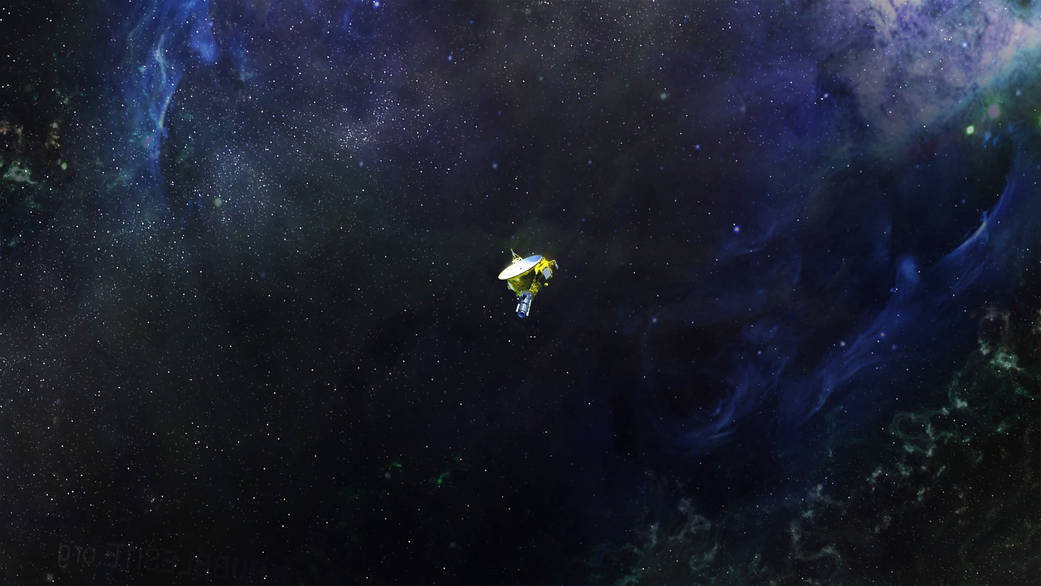
Hurtling through space at 31,000 miles per hour in this artist’s rendering, the New Horizons spacecraft begins 21 and a half hours of radio silence as it prepares to collect data for the flyby of Pluto. Turning its antenna away from Earth so that its instruments point directly towards Pluto, this pre-programmed maneuver still has program scientists anxiously awaiting re-establishment of communications slated for 9:02 PM EST on July 14.
Image Credit: NASA/APL/SwRI
At 11:17 p.m. tonight, Monday, July 13, New Horizons will go silent. As it was programmed to do, it will turn its antenna away from Earth and point its imagers toward Pluto and Charon in preparation for closest approach. For a nail-biting 21 and a half hours, New Horizons will be incommunicado as it hurtles through the Pluto-Charon system at 30,000 miles (50,000 kilometers) per hour. “We had a choice,” says Deputy Project Scientist and Pluto Encounter Planning Lead Leslie Young of the Southwest Research Institute (SwRI), Boulder, Colorado. “We’re in the heart of the Pluto system, and we’re there to explore it. Since New Horizons is designed to either communicate with Earth or collect data, but not both at the same time, we chose to gather as much valuable data as possible while we’re close.”
New Horizons has been out of radio contact before, and for longer periods, but this time is different, because there may be debris in the spacecraft’s flight path. At its tremendous speed, even a collision with a particle of dust could be catastrophic. The science team has carefully studied this possibility. According to New Horizons Principal Investigator, Alan Stern, SwRI, “The probability of a mission-ending dust impact has been estimated at less than one in ten-thousand. But we are explorers, and we are flying into the unknown.” Stern and his team will breathe a sigh of relief when New Horizons phones home, 3 billion miles away. That call is expected to arrive around 9 p.m. on Tuesday, July 14. As New Horizons Project Scientist Hal Weaver of Johns Hopkins University Applied Physics Laboratory points out, New Horizons has no backup. “Our baby will be all on its own.”
At 7:49 AM EDT tomorrow, Tuesday, July 14, New Horizons will zip past Pluto at 30,800 miles per hour (49,600 kilometers per hour), with a suite of seven science instruments busily gathering data. The mission will complete the initial reconnaissance of the solar system with the first-ever look at the icy dwarf planet.
Follow the path of the spacecraft in coming days in real time with a visualization of the actual trajectory data, using NASA’s online Eyes on Pluto.
Stay in touch with the New Horizons mission with #PlutoFlyby and on Facebook at: https://www.facebook.com/new.horizons1

























